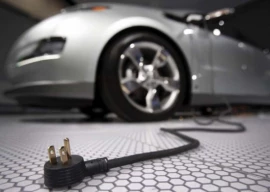
Pakistanis are gradually migrating from cash-based to digital banking as internet and mobile banking, branchless banking and EMIs have exhibited outstanding growth in terms of the number of transactions.
However, in terms of value, cash still remains the king, indicating big payments are mostly made manually through banks.
The State Bank of Pakistan (SBP) has found the pace of growth in e-banking sluggish when compared with the trend across the world, holding banks responsible for the slow advancement.
In its latest report titled “Payment Systems Review for Fiscal Year 2022-23”, the SBP said “in Pakistan, the number of transactions conducted digitally has been historically low as compared to other countries of the world, despite the presence of enabling infrastructure like 1LINK switch in the private sector”.
“One of the reasons for this low penetration is the inability of banks to innovate and their overreliance on expensive card-based payment schemes, high cost of transactions and unwillingness of ordinary citizens and business to digitise their day-to-day transactions.”
To address these challenges, the SBP decided to implement a faster/ instant payment system (Raast) for retail transactions that would be affordable and simple to use as well as fully interoperable.
Besides, the central bank awarded the digital banking licence in principle to five entities last week with the aim of accelerating the growth in online and seamless banking. None of the leading conventional banks was among the five entities despite that they applied for the digital banking licence, it has been learnt.
The Payment Systems Review, however, highlighted that e-banking transactions contributed 85% of the total payments processed by banks and microfinance banks (MFBs) while the remaining 15% were paper-based transactions in the previous fiscal year ended June 30, 2023 (FY23).
This percentage was 80% for e-banking and 20% for paper-based transactions in FY22, “indicating customers are gradually adopting digital channels.”
During the year under review, the value of paper-based transactions grew by 20.1% to Rs228.7 trillion compared to Rs190.4 trillion in FY22. The number of paper-based transactions, however, declined by 4.5% year-on-year to 374.3 million in FY23.
“This shows that the customers are choosing e-banking channels for their smaller payments and prefer paper-based instruments for higher-value transactions,” the central bank said in the report.
The average transactions size for cash deposit and cash withdrawal at banks’ counter was Rs295,925 and Rs217,549 per transaction, respectively. Similarly, for utility bill payments, the average ticket size was Rs32,742 per transaction.
“It is still a formidable challenge in overcoming the preference for cash-based transactions as evident from high currency in circulation (CiC) and the persistent influence of the informal economy, both of which continue to play a regressive role in the broader promotion of digital payments.”
The report, however, said Pakistan's digital payments landscape had evolved tremendously during the last decade with enabling regulations and technology-oriented market participants, bringing innovative digital products and services to facilitate customers in performing digital payments conveniently, securely and efficiently.
Banks and MFBs processed 2,073.3 million e-banking transactions amounting to Rs167.4 trillion during FY23, marking an annual growth of 28.6% by volume and 21.4% by value.
Published in The Express Tribune, September 28th, 2023.
Like Business on Facebook, follow @TribuneBiz on Twitter to stay informed and join in the conversation.


















COMMENTS
Comments are moderated and generally will be posted if they are on-topic and not abusive.
For more information, please see our Comments FAQ